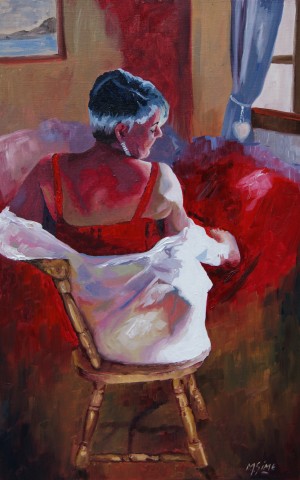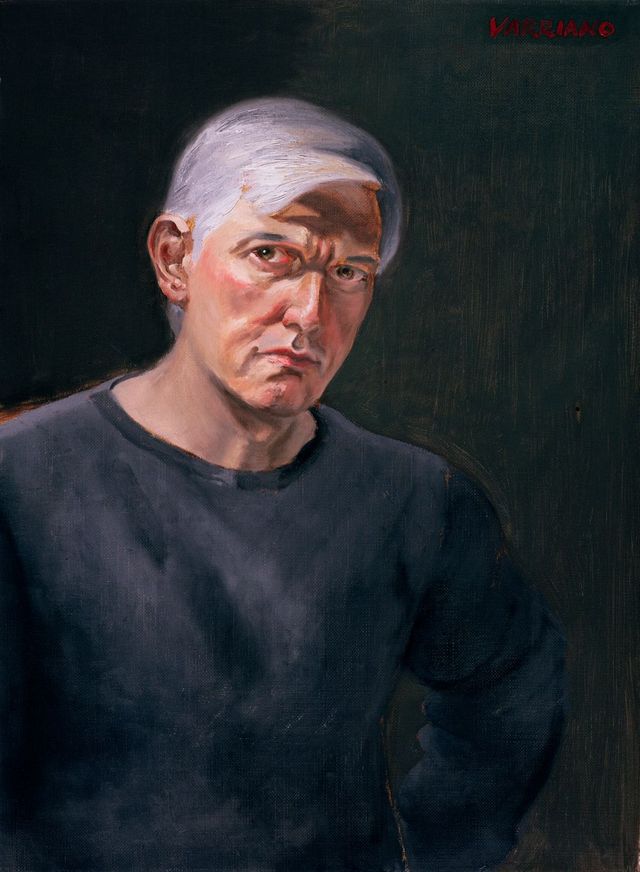Introducing the Tricks Behind Meaningful Figurative Oil Painting Styles
The Development of Figurative Oil Paint: Understanding Its Historic Importance and Modern Interpretations
The advancement of metaphorical oil paint acts as a compelling lens where to examine the interaction between creative expression and historic context. From the precise naturalism of the Renaissance to the stirring power of the Baroque, each era has added layers of definition and technique to this timeless medium. Contemporary artists, attracting from this rich heritage, are currently reinterpreting the human figure in means that challenge standard narratives. As we explore these changes, one need to take into consideration exactly how the dialogue in between present and previous informs not just artistic technique however also social representations in a significantly intricate world.
Origins of Metaphorical Oil Painting
The beginnings of metaphorical oil paint can be traced back to the early Renaissance in Europe, specifically in the 15th century. This period marked a considerable separation from the rigid kinds and level representations characteristic of middle ages art. Artists began to discover naturalism, highlighting the human number and its emotional expression. The growth of oil paint enabled better depth of shade and information, boosting the realism and vibrancy of their work.

In this transformative era, numbers were commonly depicted within contextually abundant settings, showcasing not just their physical qualities but likewise their mental states. Pioneers such as Jan van Eyck and Titian took advantage of the medium's adaptability, using layering strategies to accomplish brightness and structure. This innovation facilitated the representation of detailed materials and the subtleties of complexion, contributing to the growth of portrait and narrative scenes.
Moreover, the Renaissance focus on humanism promoted an admiration for individualism, which subsequently affected artists to create more vibrant and relatable figures - figurative oil painting. As an outcome, figurative oil paint emerged as an effective automobile for storytelling and psychological engagement, preparing for future imaginative activities and styles
Secret Historical Movements
Substantial historic activities have actually formed the evolution of figurative oil paint, each adding special viewpoints and techniques that broadened the medium's possibilities. The Renaissance noted a pivotal moment, emphasizing realistic look and the human form, with artists like Leonardo da Vinci and Michelangelo pressing the boundaries of anatomical precision and point of view. Following this, the Baroque age brought significant contrasts of light and shadow, exemplified by Caravaggio, that infused spiritual themes with intense emotionality.
The 19th century introduced Romanticism and Realistic look, where artists such as Delacroix and Courbet tested timeless perfects, focusing on specific expression and everyday life. The arrival of Impressionism further reinvented the medium by stressing the results of light and color, resulting in a separation from traditional depiction.
In the very early 20th century, activities like Expressionism and Cubism redefined metaphorical paint with abstraction and the expedition of emotional depth. Each of these movements not just mirrored the social adjustments of their times but additionally laid the foundation for modern analyses. The interplay in between these historical movements has actually developed an abundant tapestry of approaches and styles, influencing modern-day artists in their quest of catching the human experience on canvas.
Strategies and Products Advancement

Throughout the Baroque duration, methods such as chiaroscuro and sfumato arised, boosting the psychological resonance of figurative compositions. Musicians began to explore lusters and impasto, controling appearance and luminosity. By the 19th century, technologies like making use of pre-mixed paints in tubes transformed availability, permitting artists to paint en plein air and catch the fleeting results of light.
The 20th century observed the introduction of artificial pigments and mediums, which increased the scheme and altered the consistency of oil paints. Furthermore, the expedition of brand-new application methods, such as combination blades and brushes of differing rigidity, further diversified imaginative expression. Jointly, these innovations mirror the progressing partnership between products, techniques, and the imaginative vision fundamental in figurative oil paint.

Contemporary Analyses
Contemporary interpretations of metaphorical oil paint reflect a vibrant discussion in between practice and technology, where musicians challenge developed norms and explore varied motifs. This development manifests in various ways, as modern artists mix classic techniques with modern-day principles, usually dealing with social, political, and individual narratives.
Numerous experts draw ideas from historic jobs, yet they infuse their pieces with contemporary perspectives, using the human form as a vehicle for discourse on sex, society, and identity. Artists progressively experiment with abstraction, distortion, and combined media, which permits a broader interpretation of the figure and Resources its context.
Additionally, the usage of vivid shade schemes and non-traditional make-ups typically serves to interfere with standard watching experiences, prompting important involvement from audiences. This change in emphasis prolongs past looks; it mirrors an expanding awareness of the intricacies of human experience in an interconnected globe.
As figurative oil painting remains to evolve, it remains a crucial medium for exploring the nuances of contemporary life, personifying both a respect for heritage and a dedication to dynamic thought. The result is an abundant tapestry of expression that reverberates with the intricacies of the contemporary human problem.
Effect On Modern Art
The effect of metaphorical oil paint on modern-day art is extensive, as it has constantly influenced a myriad of imaginative movements and practices throughout the 21st and 20th centuries. From Expressionism to Surrealism and beyond, the exploration of the human number has actually stayed a main style, enabling artists to convey intricate emotions and narratives. This emphasis on figurative representation has led to a re-examination of typical strategies, causing ingenious approaches that blend realism with abstraction.
Furthermore, contemporary artists have accepted figurative oil paint as a method to address social and political concerns, utilizing the tool to test understandings of gender, culture, and identification. The revival of rate of interest in metaphorical work in current years shows a wishing for link in a significantly electronic globe, where human experience and emotion are paramount.
In addition, the discussion in between figurative oil painting and modern art appears in the works of musicians such as Kehinde Wiley and Jenny Saville, that make use of historic recommendations while instilling their pieces with contemporary relevance. Ultimately, metaphorical oil painting continues to form and redefine modern-day artistic expression, highlighting its enduring relevance in the art globe.
Conclusion
The development of metaphorical oil painting highlights its historical relevance and flexibility throughout numerous artistic movements. From the naturalism of the Renaissance to the stirring expressions of the Baroque and the innovative methods of modernity, this tool has constantly changed. Contemporary interpretations show unusual compositions and vibrant shades, cultivating crucial interaction with political and social styles. Ultimately, figurative oil paint continues to be an essential medium for checking out the description human experience, resonating helpful hints profoundly in today's digital landscape.
The advancement of metaphorical oil painting offers as an engaging lens via which to check out the interplay between creative expression and historic context.Substantial historic movements have formed the evolution of figurative oil painting, each contributing unique approaches and techniques that increased the medium's opportunities.As historical movements shaped the trajectory of metaphorical oil paint, the methods and products employed by artists have additionally undertaken substantial makeovers. figurative oil painting.The impact of metaphorical oil paint on modern-day art is extensive, as it has actually constantly motivated a myriad of artistic activities and practices throughout the 20th and 21st centuries.The evolution of figurative oil painting underscores its historic value and adaptability across various imaginative motions